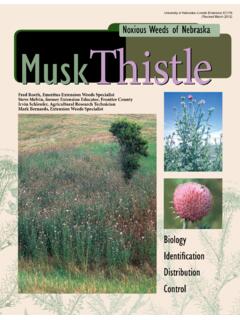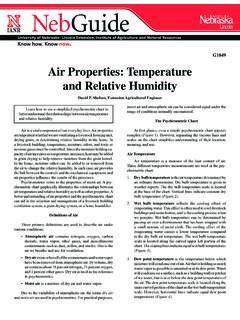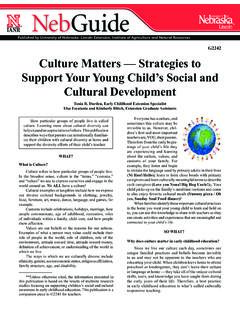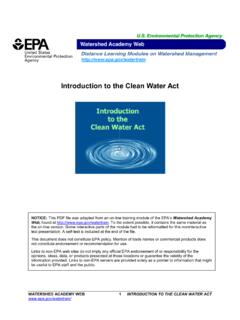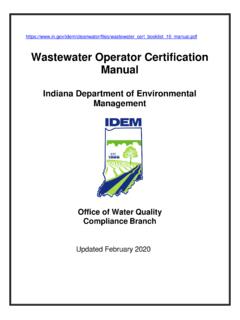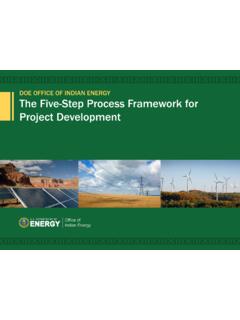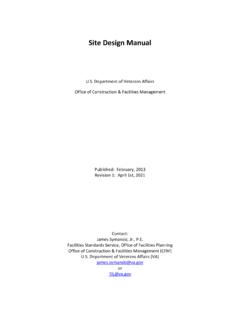Transcription of G2238 Stormwater Management: What Stormwater …
1 Know how. Know now. University of Nebraska Lincoln Extension, Institute of Agriculture and Natural ResourcesG2238 Stormwater Management: What Stormwater management Is and Why It Is ImportantBobbi A. Holm, Extension Educator Stormwater ManagementKent E. Holm, Certified Stormwater Manager, Douglas County Environmental Services DirectorDavid P. Shelton, Extension Agricultural EngineerSteven N. Rodie, Landscape Horticulture SpecialistKelly A. Feehan, Extension Educator HorticultureThomas G. Franti, Extension Surface Water management EngineerThis NebGuide provides an overview of what Stormwater is; what it means to manage Stormwater ; why it is important to do so; and the changing practice of Stormwater management .
2 Stormwater is water from rain and melting snow and ice. Stormwater can soak into the soil (infiltrate), be held on the surface and evaporate, or run off and end up in a nearby stream, river, or other water body. Before land is developed with buildings, roadways, and agriculture, the majority of Stormwater soaks into the soil or evaporates. In a natural area such as a prairie or forest, the soil absorbs considerable amounts of Stormwater , and plants help hold Stormwater close to where it falls so very little runs off. When the Great Plains was covered with prairie grass and occasional woodlands, rainfall drained slowly into streams and rivers.
3 Plant leaves and stems intercepted and slowed rainfall, allowing it to seep through decaying plant material on the soil surface and soak into the ground. Some of this water would slowly flow through the soil to nearby water bodies. Water that percolated down to groundwater might be released to the surface by springs. During heavy rains, runoff would flow over the ground, but was slowed and filtered by plants before reaching surface water. In contrast, as populations grow, cities expand, and more development takes place, large amounts of runoff are produced from rooftops, concrete, asphalt, and other im-pervious surfaces that are built to shed water.
4 Rather than soaking into the soil and slowly seeping to surface water, runoff is quickly funneled through storm drainage systems directly to streams, rivers, and lakes (Figure 1). The natural processes of infiltration, evaporation, and filtering are greatly reduced, and the amount and speed of Stormwater runoff is greatly increased. Stormwater ManagementStormwater management is the control and use of storm-water runoff. It includes planning for runoff, maintaining Stormwater systems, and regulating the collection, storage, and movement of Stormwater .
5 Stormwater management also considers drainage in the design of cities and housing developments. The goals of Stormwater management include protecting our environment; reducing flooding to protect people and property; reducing demand on public Stormwater drainage systems; supporting healthy streams and rivers; and creating healthier, more sustainable communities. Effective Stormwater management provides environmental, social, and economic benefits to local communities. When Stormwater management is done well, streams, rivers, and lakes are cleaner; flood risks are reduced; costs due to flood damage decrease; and com-munity quality of life increases.
6 Figure 1. Stormwater runoff flowing into a storm drain. From here it flows directly to a nearby stream, river, or other surface water body. Examples of Green InfrastructureConserving green space allowing natural areas to remain during development to continue providing benefits (sometimes called ecosystem services) such as Stormwater retention, air filtering, diversity of plants and wildlife, summer cooling, and recreation. Rain gardens decorative gardens that catch Stormwater ; they have plants and soil that filter runoff water and encourage infiltration; excessive runoff typically flows out of the garden through a designed overflow.
7 Bioretention gardens much like rain gardens but larger and have a pipe underdrain system with a valve to manage water levels and enhance filtration and plant growing conditions (Figure 2). Green roofs special roofs with plants and soil-like growing media that capture and use Stormwater , and slow and filter the water that flows off. Stormwater swales shallow, planted ditches that carry runoff; they slow and filter the water and increase infiltration. Rain barrels and cisterns containers that capture and store runoff for later use, most often to water plants.
8 Constructed wetlands built to act like natural wetlands to slow, filter, and soak in Stormwater . Permeable pavements paving systems that allow Stormwater to pass through and into gravel layers that store water until it soaks into the soil; a pipe system may be included in the gravel layer to drain excessive runoff. Stream restoration returns channelized, damaged streams to a meandering flow path with healthy plant cover to hold more Stormwater , reduce erosion, and improve floodplain function; also includes stream daylighting where a previously buried stream is restored to a more natural, open channel.
9 Figure 2. A bioretention garden after a rainstorm. Bioretention gardens capture and filter runoff and let it soak into the soil, usually within 24 to 48 hours. Traditional Stormwater ManagementAs development occurs, buildings, roads, parking lots, and other impermeable surfaces increase the amount of runoff. This runoff traditionally has been considered a nuisance because it could cause flooding. Gutters, storm drains, pipes, and other structures were used to collect and carry Stormwater away and release it into local streams as quickly as possible.
10 Many urban streams were straight-ened or channelized to remove runoff even faster. While this can reduce local flooding, flooding is more likely to happen downstream, especially if high flows from two or more streams converge. Because water moves faster in a channelized stream, increased erosion of the stream bed and bank can occur. Channelization also disconnects a stream from its natu-ral floodplain. The floodplain is an area of low-lying land along a stream or river that holds and then slowly releases floodwaters, reducing downstream flooding.
